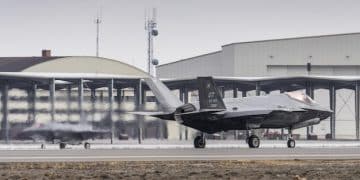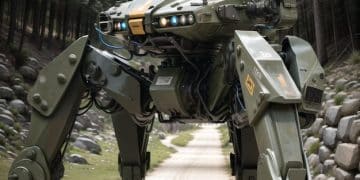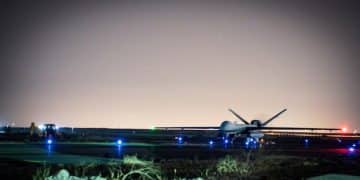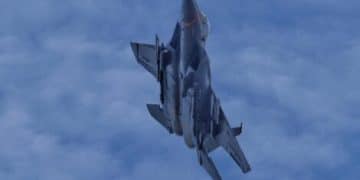Key Tech Differences: US vs. Russian Main Battle Tanks
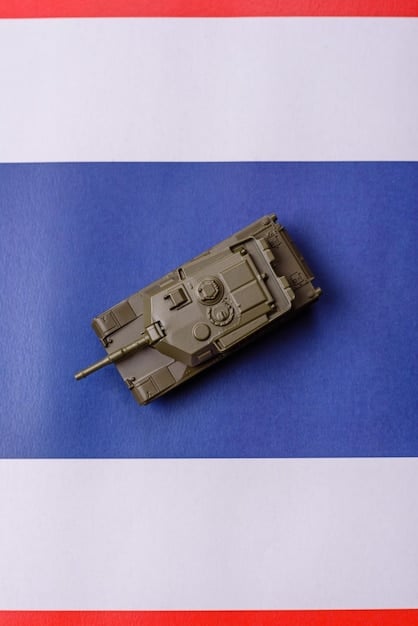
What are the Key Technological Differences Between US and Russian Main Battle Tanks? These differences lie primarily in design philosophies, with US tanks prioritizing crew safety and advanced technology, while Russian tanks often emphasize firepower, mobility, and cost-effectiveness.
Understanding the nuances of modern warfare requires a deep dive into the tools and technologies employed by different nations. One of the most critical pieces of military hardware is the Main Battle Tank (MBT). Let’s explore, what are the key technological differences between US and Russian main battle tanks?
Examining these differences sheds light on the varying strategic doctrines, engineering priorities, and economic realities shaping each nation’s armored forces. So, let’s begin this comparison of What are the Key Technological Differences Between US and Russian Main Battle Tanks?
What are the Key Differences in Design Philosophy?
The design philosophies guiding the development of US and Russian main battle tanks diverge significantly, reflecting different approaches to armored warfare. Understanding these core principles is essential to grasping What are the Key Technological Differences Between US and Russian Main Battle Tanks?
US Tank Design: Prioritizing Crew Survivability and Technological Superiority
US tank design, exemplified by the M1 Abrams series, prioritizes crew survivability above all else. This emphasis translates into heavy armor, sophisticated fire control systems, and advanced situational awareness tools. The aim is not only to destroy enemy tanks but also to ensure the safety of the crew in a combat environment.
Russian Tank Design: Emphasizing Firepower, Mobility, and Cost-Effectiveness
In contrast, Russian tank design, seen in the T-72, T-90, and T-14 Armata, historically emphasizes firepower, mobility, and cost-effectiveness. Russian tanks often feature autoloading systems to reduce crew size, allowing for a smaller, lighter vehicle with a powerful gun. The focus is on mass production and deployment of tanks that are effective and affordable.
- Crew Size: US tanks typically have a crew of four, while Russian tanks often have a crew of three due to the use of autoloaders.
- Armor Protection: US tanks generally have heavier and more sophisticated armor, including depleted uranium composite armor in the Abrams, offering superior protection against a wider range of threats.
- Firepower: While both US and Russian tanks possess powerful main guns, the autoloading systems in Russian tanks allow for a higher rate of fire.
In summary, the US prioritizes crew safety and cutting-edge technology, leading to heavier, more expensive tanks. Russia favors firepower, mobility, and affordability, resulting in lighter, more numerous tanks. These differing design philosophies are fundamental to What are the Key Technological Differences Between US and Russian Main Battle Tanks?
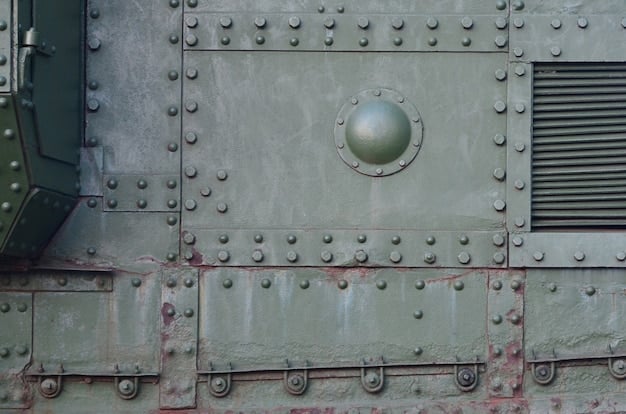
Firepower: Guns, Missiles, and Ammunition
Firepower is a crucial aspect of any main battle tank, and both US and Russian tanks boast impressive arsenals. However, the types of guns, missiles, and ammunition employed differ, reflecting their respective design philosophies and tactical doctrines. Determining What are the Key Technological Differences Between US and Russian Main Battle Tanks? requires a closer look at their offensive capabilities.
Main Guns: Caliber, Rate of Fire, and Accuracy
Both US and Russian tanks are equipped with high-caliber main guns designed to defeat enemy armor. The US M1 Abrams uses a 120mm smoothbore gun, while Russian tanks like the T-90 and T-14 Armata also utilize 125mm smoothbore guns. However, the autoloading systems on Russian tanks generally allow for a higher rate of fire compared to the manually loaded Abrams.
Missile Capabilities: Guided Munitions and Range
Some Russian tanks, like the T-90, are capable of firing anti-tank guided missiles (ATGMs) through their main guns, providing an extended range and the ability to engage targets beyond the reach of conventional tank rounds. US tanks do not typically have this capability, relying instead on conventional ammunition and support from other platforms for long-range engagements.
- Ammunition Types: Both US and Russian tanks use a variety of ammunition types, including armor-piercing fin-stabilized discarding sabot (APFSDS), high-explosive anti-tank (HEAT), and high-explosive (HE) rounds.
- Fire Control Systems: US tanks generally feature more advanced fire control systems, including thermal sights, laser rangefinders, and ballistic computers, enabling greater accuracy and first-round hit probability.
- Autoloaders vs. Manual Loading: The autoloading systems in Russian tanks reduce crew size and increase rate of fire, but some argue that they are less reliable and slower to adapt to different ammunition types compared to manual loading.
Firepower is a crucial factor in tank warfare. US tanks prioritize accuracy and advanced fire control, while Russian tanks emphasize rate of fire and missile capabilities. Understanding these differences is key to understanding What are the Key Technological Differences Between US and Russian Main Battle Tanks?
Armor Protection: A Comparative Analysis
Armor protection is paramount for the survivability of a main battle tank. Understanding the different approaches to armor design and technology is essential to determining What are the Key Technological Differences Between US and Russian Main Battle Tanks? Let’s investigate how these differences translate into battlefield performance.
US Armor: Heavy Composite Armor and Depleted Uranium
US tanks, particularly the M1 Abrams, are renowned for their heavy composite armor, which incorporates layers of different materials to provide superior protection against a wide range of threats. Some Abrams variants also utilize depleted uranium (DU) armor, further enhancing their resistance to armor-piercing rounds.
Russian Armor: Reactive Armor and Advanced Steel Alloys
Russian tanks rely on a combination of reactive armor, advanced steel alloys, and composite materials to protect against enemy fire. Reactive armor, such as Explosive Reactive Armor (ERA), detonates upon impact, disrupting the penetrating power of incoming projectiles. This provides a significant boost to the tank’s overall protection.
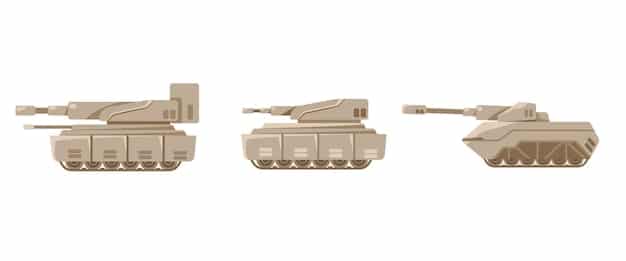
- Active Protection Systems (APS): Both US and Russian tanks are increasingly incorporating active protection systems (APS), which are designed to detect and intercept incoming projectiles before they reach the tank.
- Armor Thickness and Composition: US tanks generally have thicker armor than their Russian counterparts, but the specific composition and effectiveness of the armor are closely guarded secrets.
- Vulnerability Points: All tanks have vulnerable points, such as the turret ring and engine compartment, which can be exploited by enemy fire.
The US focuses on heavy, sophisticated composite armor, while Russia utilizes reactive armor and advanced steel alloys. Both approaches aim to maximize protection against enemy threats, but they achieve this goal through different means. These choices contribute significantly to What are the Key Technological Differences Between US and Russian Main Battle Tanks?
Mobility and Power: Engines, Suspension, and Terrain Negotiation
Mobility is a critical factor in modern tank warfare, enabling tanks to rapidly deploy, maneuver across challenging terrain, and evade enemy fire. Let’s consider What are the Key Technological Differences Between US and Russian Main Battle Tanks? in terms of their mobility and power.
US Tanks: Powerful Turbine Engines and Advanced Suspension Systems
US tanks, like the M1 Abrams, are powered by powerful turbine engines that provide exceptional acceleration and top speed. These engines are known for their reliability and ability to operate on a variety of fuels. The Abrams also features an advanced suspension system that allows it to traverse rough terrain with ease.
Russian Tanks: Compact Diesel Engines and Lightweight Designs
Russian tanks typically utilize more compact diesel engines, which are less fuel-thirsty and easier to maintain than turbine engines. Russian tanks are also generally lighter than their US counterparts, allowing them to achieve greater speeds and maneuverability, especially in softer terrain.
- Power-to-Weight Ratio: While US tanks have more powerful engines, their heavier weight results in a lower power-to-weight ratio compared to Russian tanks.
- Terrain Negotiation: Both US and Russian tanks are designed to operate in a variety of environments, but their specific strengths and weaknesses vary depending on the terrain.
- Fuel Efficiency: Russian tanks generally have better fuel efficiency than US tanks, allowing them to operate for longer periods without refueling.
US tanks prioritize raw power and advanced suspension, while Russian tanks emphasize fuel efficiency and lightweight designs. These choices have a significant impact on their respective mobility and terrain negotiation capabilities. These differences are critical to What are the Key Technological Differences Between US and Russian Main Battle Tanks?
Advanced Technology and Electronics
The integration of advanced technology and electronics is increasingly important in modern tank warfare, enhancing situational awareness, fire control, and overall combat effectiveness. Let’s explore these aspects and better understand, What are the Key Technological Differences Between US and Russian Main Battle Tanks? in their electronic warfare and sensor capabilities.
US Tanks: Superior Fire Control Systems and Situational Awareness
US tanks generally feature more sophisticated fire control systems, including thermal sights, laser rangefinders, and ballistic computers, which enable greater accuracy and first-round hit probability. They also incorporate advanced situational awareness tools, such as digital displays, GPS navigation, and battlefield management systems, providing crews with a comprehensive view of the battlefield.
Russian Tanks: Emphasis on Electronic Warfare and Jamming Capabilities
Russian tanks have historically focused on electronic warfare (EW) and jamming capabilities, designed to disrupt enemy communications, sensors, and fire control systems. They also utilize a variety of sensors and targeting systems, although these are generally considered to be less advanced than their US counterparts.
- Communication Systems: US tanks are equipped with advanced communication systems that allow them to communicate with other vehicles, aircraft, and command centers in real-time.
- Countermeasures: Both US and Russian tanks utilize a variety of countermeasures to protect against enemy threats, including smoke grenades, laser warning systems, and active protection systems.
- Future Technologies: Both countries are actively developing and integrating new technologies into their tank fleets, such as artificial intelligence, unmanned systems, and directed energy weapons.
US tanks excel in fire control and situational awareness, while Russian tanks prioritize electronic warfare and jamming capabilities. As technology continues to evolve, the integration of these advanced systems will play an increasingly important role in determining the outcome of future tank battles. These strengths and weaknesses are crucial to illustrating What are the Key Technological Differences Between US and Russian Main Battle Tanks?
| Key Aspect | Brief Description |
|---|---|
| 🛡️ Armor Protection | US tanks use heavy composite armor, while Russian tanks use reactive armor. |
| 🔥 Firepower | Russian tanks often have autoloaders for faster firing rates. |
| 🚀 Mobility | US tanks feature turbine engines, Russian tanks use more compact diesel engines. |
Frequently Asked Questions
US tank design prioritizes crew survivability and technological superiority, while Russian design emphasizes firepower, mobility, and cost-effectiveness, shaping What are the Key Technological Differences Between US and Russian Main Battle Tanks?.
US tanks typically have a crew of four, while Russian tanks often have a crew of three. This difference is primarily due to the use of autoloading systems in Russian tanks.
Some Russian tanks can fire ATGMs through their main guns, extending their range. US tanks generally do not have this capability, relying on conventional ammunition and support from other platforms.
US tanks use heavy composite armor, while Russian tanks rely on a combination of reactive armor, advanced steel alloys, and composite materials for enhanced protection.
Russian tanks generally have better fuel efficiency than US tanks, primarily because they utilize compact diesel engines, as opposed to the turbine engines used in American tanks.
Conclusion
In conclusion, the technological differences between US and Russian main battle tanks reflect distinct design philosophies and strategic priorities. While US tanks prioritize crew survivability and technological superiority, Russian tanks focus on firepower, mobility, and cost-effectiveness.
Understanding these distinctions is crucial for assessing the relative strengths and weaknesses of each nation’s armored forces and for predicting the outcome of future tank battles. By analyzing What are the Key Technological Differences Between US and Russian Main Battle Tanks?, we can gain a deeper understanding.

